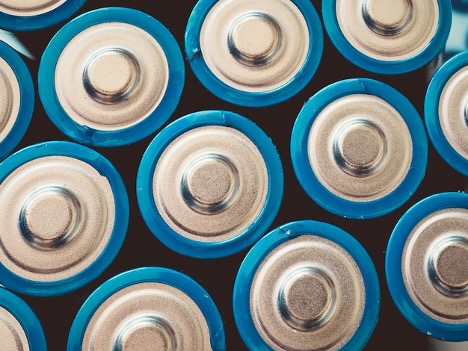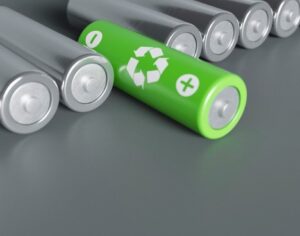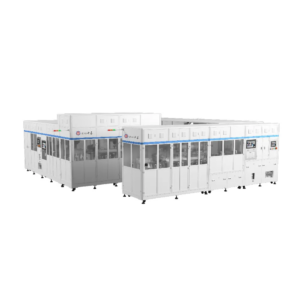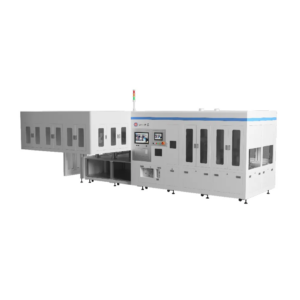The sustainable battery production process has been gaining substantial attention recently. Because of the growing demand for EVs (electric vehicles) and renewable energy storage, more and more businesses are joining the competition of battery manufacturing to grasp the large opportunities.
However, the expanding use of eco-friendly batteries is driven by their potential to reduce emissions and support clean energy. The whole process may involve significant environmental challenges. It may render resource extraction, high energy consumption, and waste production.
This article outlines the current environment issue on battery manufacturing and the methods to achieve green manufacturing in battery production process.
(Copyright Photo from: https://img.freepik.com/free-photo/wasteless-concept-with-blossoming-bouquet_23-2149696445.jpg?t=st=1717147622~exp=1717151222~hmac=9492c68bdbe83e5ae26eae7802cb51bffd162053a2aeac46b612f2c987e2c806&w=996)
Current Manufacturing Status for Environmental Impact
The demand for batteries is soaring to power everything from smartphones to electric vehicles. However, it would bring some environmental impact for various aspects:
1. Warm-House Gas Emission When Mining
While sustainable batteries are highly significant in combating global warming, mining components used in battery production processes come with environmental concerns. Mining and mineral processing needed in the lithium battery production process contributes to 40% of the climate impact in the overall process[1]. And when digging the metal elements, machines would generate the warm house gases, which exaggerate the global warming.
2. Toxic Materials Utilization
Data Center Knowledge[2] shows that some types of lithium-ion batteries integrate toxic materials that can contaminate the water supplies or ecosystem around the mine. In the battery manufacturing process, certain toxic materials, such as nickel, cobalt, and manganese, are often utilized due to their superior electrochemical properties. These materials enhance battery performance and provide reliable efficiency.
But the use of these toxic substances carries significant environmental drawbacks. For example, lead and cadmium are highly toxic to humans and wildlife, posing serious health risks if they contaminate soil and water. The disposal of batteries containing these materials can result in hazardous waste, contributing to environmental pollution and necessitating careful handling and recycling measures to mitigate their adverse effects.
3. Multiple Machines Operation
Multiple machines operation in the battery manufacturing process, by its complex and multi-step nature, compounds environmental concerns. Separate machine in battery manufacturing often requires significant energy consumption. So, it leads to increased greenhouse gas emissions, especially those fossil fuels-powered machines.
How to Achieve a Greener Manufacturing in Battery Production?
To achieve green and sustainable goals when manufacturing batteries for EV, ESS, and more related sectors, battery manufacturers should understand that it’s imperative to take significant actions during the battery production process. Here are some strategies that can help:
Reduce Hazardous Substances
One of the key factors that contribute to the environmental impact is the use of harmful materials. As we mentioned above, various batteries used in consumer electronics and electric vehicles contain several toxic elements.
To mitigate these risks, you must deploy nontoxic alternatives such as Lithium iron phosphate (LiFePO4), Lithium Manganate (LiMn2O4), and etc. to lower the toxicity of a battery. These are sustainable solutions that have minimal impact on the environment. Moreover, you can also alleviate hazardous substances by adopting a closed-loop recycling process. It helps to manage waste efficiently[3] and recover valuable materials.
(Copyright Photo from: https://www.freepik.com/free-photo/high-angle-shot-group-blue-batteries-surface_13338884.htm#fromView=search&page=1&position=6&uuid=0de68c64-7e52-4465-b940-4500d092c337)
Develop Eco-Design Battery Design
The next strategy for adopting green manufacturing in battery production processes is to optimize design. To do that, you can employ computer-aided design tools to assess the battery performance in different scenarios.
Moreover, you can create customized shapes that alleviate material and energy consumption. This can be done using additive manufacturing, such as 3D printing technology. Try to create modular designs that allow easy disassembly and component replacement.
Conduct life cycle assessments to acknowledge the environmental impact during the entire battery production process, from raw material extraction to end-of-life disposal. Then use the results to employ sustainable materials to alleviate carbon footprint.
Develop battery production processes that utilize less energy and source materials from suppliers that are committed to sustainable practices.
Establish Smart Factory
For real-time monitoring of the battery production process, IoT devices should be adopted to control the manufacturing stages. Digitalization and integration of AI or ML can improve operational sustainability and address the challenges facing the battery production process. By leveraging a data-driven approach, you can increase the process efficiency and reduce waste.
Also, you can incorporate sensors or smart features to monitor and control the battery production process.
Why Automated Assembly Line Plays a Vital to Achieve Green Manufacturing
For establishing a smart factory, the automated assembly line is also a cornerstone that can improve the quality of green manufacturing. These advanced systems have a role in making the battery production processes eco-friendly, reducing waste, and conserving resources. Here’s how automation plays a vital role in making batteries more sustainable.
Improve Energy Efficiency
An automated assembly line plays a crucial role in improving energy efficiency. This system is often equipped with advanced energy monitoring and management technologies, which allows you to enable real-time tracking and optimization of energy use.
Besides, you can reduce production times and overall energy consumption by automating various steps. This level of efficiency is difficult to achieve with manual processes. It makes automation a key component in reducing the carbon footprint of manufacturing operations.
Optimize Resources Utilization
Automated manufacturing optimizes resource utilization by automatically managing material use to a perfect standard so as to minimize waste. It allows for exact measurements and controlled processes that significantly reduce scrap and rework. Thus, it leads to a more efficient use of raw materials. By enhancing precise control, automated battery manufacturing ensures that inputs such as water, chemicals, and other materials are used effectively during the battery production process. It contributes to a green manufacturing environment.
Enhance Manufacturing Flexibility
With technological advancements, manufacturers need to respond to changes for a competitive edge. Automation facilitates the easy reprogramming of battery manufacturing machine setups to handling different battery types and sizes without extensive downtime. This adaptability supports incorporating new materials and designs, such as transitioning to more sustainable battery technologies.
Introduce SZJ Automation’s Intelligent Solution for Cylindrical Cell Assembly Line
So, if you are ready to invest in automated tools in the battery production process to enhance green manufacturing, connect with us, SZJ Automation. Our advanced Intelligent Solution for Cylindrical Cell Assembly Line is designed to meet the various needs of the market. Here are the features of our automatic battery manufacturing turnkey solution:
High Production Efficiency
Our production line is capable of achieving a high production rate (ranging from 50 to 350 PPM), which can be tailored to meet the specific requirements of our customers, whether they are looking for a small-scale operation or a large-scale industrial production. This high production capacity also lets you spend less on energy consumption, delivering a green manufacturing process to lower the influence on our planet.
Comprehensive Cover of Battery Production Process
Our Intelligent Solution for Cylindrical Cell Assembly Lines offers a comprehensive range of automated processes, from electrode preparation and cell assembly to formation and sealing. By implementing advanced automation programs, precise control systems, and intelligent quality control mechanisms, we enable seamless and precise manufacturing operations.
Flexible to Meet Your Battery Manufacturing Needs
Additionally, the flexible nature of our Intelligent Solution for Cylindrical Cell Assembly Lines promotes resource efficiency and waste reduction. This solution adapts to different battery sizes, supporting both large and small cylindrical cells. This flexibility ensures that materials are utilized efficiently, reducing waste and optimizing production output.
Capable of Integrating into Smart Factory
SZJ Automation emphasizes the significance of smart factory development. So, our battery production turnkey solution has the capability of analyzing data and monitoring in real-time during the battery production process. Battery manufacturers can gain valuable insights into their production processes. This enables proactive maintenance, process optimization, and continuous improvement, leading to higher overall efficiency and reduced environmental impact.
Conclusion
In short, with the rapidly growing demand for batteries, it’s important to achieve green manufacturing to combat climate impact. You can improve production process sustainability by reducing hazardous substances, managing waste, and adopting advanced technologies.
For that, we offer innovative but practical solutions that contribute to eco-consciousness. With our over 20 years of experience in studying battery production processes, SZJ Automation can ensure every client can gain efficient and high-quality battery production machines. Feel free to contact us!
Reference
- Available at: https://www.instituteforenergyresearch.org/renewable/environmental-impacts-of-lithium-ion-batteries/
- Available at: https://www.datacenterknowledge.com/hardware/environmental-impact-lithium-ion-batteries-how-green-are-they-really
- Available at: https://www.ncbi.nlm.nih.gov/pmc/articles/PMC9741469/






